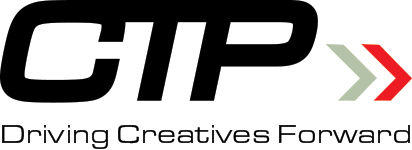Own Your Marketing Platform:
Build Your Marketing Engine to Drive Your Business
- Bootstrapping
- Customers
- Marketing
- Learning How to Sell
- Starting a Business
- Team
- Writing
- Workshop for Graphic Designers
6 Steps to Grow Your Email House List with Aweber
The Power of Marketing Automation
Own Your Marketing Platform: Build Your Marketing Engine
How and Why to Discover Your USP Unique Selling Proposition
Why Clickfunnels is so important for Creative Professionals
Sales Funnels How and Why to Get Into the Game
I want to reflect on the Social Media Examiner podcast episode titled “Is Blogging Dead? Building Your Content Home on Rented Land” with Michael Stelzner, Mitch Joel and Mark Schaefer, which focused on a discussion around blogging and specifically asking the question, is it dead and will it go away? The podcast episode expands on a discussion about whether or not you should be publishing content on your own platform versus moving it over to places like Facebook or LinkedIn. You have to listen to this podcast episode, maybe even twice like I did. They really dive deep and touch on a number of very important issues surrounding rented vs owned land for your content. In some ways, I agree that publishing on platforms directly like Linkedin and Facebook are necessary and Carve The Path, although new at the time of writing this article, will very soon be posting long form content to Linkedin and Facebook, as well as here, on Carvethepath.com
In my opinion the answer is still that you need to focus your efforts around publishing content and controlling it on your own platform and really concentrate on building out your centralized hub, your marketing engine that fuels your business growth. Every strategy you deploy externally, should connect back to your main hub from a strategic point of view, but at the same time, offer the conveniences to allow financial transactions, customer service, content consumption etc on the platforms your customers are wanting to use, when they want to use them.
There is definitely massive opportunity to publish and gain awareness on social media platforms like Facebook, and LinkedIn from a “written word” and contextual perspective. Expanding to other content mediums to include images, video and live streaming, you should also be posting content on YouTube, Snapchat, Instagram, Pinterest, Blab, Periscope and diving into full blown Mobile App Development, if after testing these platforms, it makes sense for your business. Although your content takes on many forms inside these marketing and communication channels, at the central focus of everything, businesses need to keep in mind that your customers are searching for information by either typing or speaking to a device to search for information.
In order to make that functionality work, in the background, the information driving what comes up as a result of the search, relies heavily on the meta-information and structured data that is programmed into and around your content. This backend meta, structured and contextual information, will help to determine the way that your message, your brand and your content shows up in search results and has a direct relationship with how you will compete on these marketing channels. Paying attention to the contextual relevance of your content, will provide your company with a certain level of control over the customer experience for each marketing channel.
By controlling your marketing engine on your own platform, you own the sales pipeline, which will provide your company with the opportunity to optimize all of your content around your business development goals. This means that you can decide what your internal priorities are and where the attention and focus of your internal efforts should be placed. My recommendation is to have a centralized model where you are in control of the optimization process and the content structure and organization of that content structure on your own platform.
During the podcast episode, they were touching on the key point that less and less social media traffic is coming through to your blog/platform, which I found to be a very interesting observation from key players who are very well established in the social media marketing space, which means that if they are seeing this trend, everyone is. Now, they were not saying that social media marketing was not relevant or useful, this was just an observation around reduced traffic flow. My take on what they were alluding to is that as fragmentation increases, the shear number of marketing channels available to customers and marketers keeps expanding and breaking customer attention into different segments and sub-groups or niches. This attention graph shift is a constant challenge for marketers and businesses to maintain engagement to campaigns, specific pieces of content, blog posts, white papers, case studies, articles and updates on social media channels.
Michael, Mitch and Mark also had a really good discussion about whether or not a blog, operating as a blog will continue to grow and discussion boards continue to live or not. The question was posed as to whether these platforms will become more of an article publishing platform or remain in their grassroots. I completely agree and really resonate with this point of view and feel that blogging is in a transition phase for some markets and audiences, over to more of an article publishing platform. That being said, where there are very strong communities that interact with each other using commenting as a platform, I think it makes sense for those blogs or forums to maintain their commenting infrastructure. The bottom line is, know your audience, know your customers, know your community. If comments make sense, don’t turn them off.
So as far as your methodology for producing blogs / article sites, you could be using platforms like WordPress, Blogger or TypePad to facilitate the publishing of that content on your blog or if you prefer, you could just use them as a CMS publishing platform without comments. I would also argue that if you are looking to leverage the use of a blogging platform like WordPress or TypePad or anything else, you can use anything for publishing web content like Adobe Dreamweaver, Adobe Experience Manager, Drupal or Joomla.
Your content development strategy really depends on the kind of business you are trying to grow. If we look at Social Media Examiner for a minute, they are running an extremely successful blog platform and have developed a very strong and engaged community who are passionate about learning together. They are deploying strategies that work and focus on creating amazing content that their audience resonates with. Michael Stelzer and his team have done an outstanding job, one that I think a lot of companies could really analyze and learn from.
If we put that in the context for a minute, Social Media Examiner is working with or for the entrepreneurial social media marketing industry, which is probably the most connected market that you could go after and who are on the cutting edge of what is going on on social media, in blogging etc. Social media, blogging, etc are among the most popular ways that the entrepreneurial and marketing industry consumes content. It’s a perfect scenario for a marketing based social media based company to go after, but I would say that this lays the groundwork and foundation as a model for other industries to study and to leverage. If you take a B2C company or B2B company, the struggles to grow and leverage social media and content marketing initiatives in some ways are very different, but the principles can be applied across different vertical markets. I’m not saying that Social Media Examiner has it easy in any way, they are operating in a very competitive space. My understanding of how they operate, from my perspective, is from a place of strong organization but with being open minded, with persistence and with high integrity, which are traits I respect.
Control Your Own Destiny
Getting back to the core subject here, you need to centralize and control your own destiny, you need to use the hub and spoke model, with your hub being your own website or your blog, or whatever you want to call it. Your home base is where your authoritative content must be published on, with the spokes around the hub connecting all the pieces together.
Test Your Content Marketing Strategy
Make sure you are testing your content marketing strategy, to determine what is working for your business and what isn’t. Leverage the power of Facebook for example, but you still should test it and if it is not working after you have tested all the different ways that you can market on Facebook and you are not seeing the return on investment than you move on. But before you abandon any strategy, you have to make sure that your tests are thorough and that you are really putting a platform through its paces, objectively, without any sugar coating. To follow up on the Facebook example, do not simply boost a couple of posts, gain some traffic and determine that because your $500 spend did not convert direct sales, that you have tested what Facebook can do or not do for your business. Go further, split test different campaigns, post at different times of the day, build custom audiences, work on retargeting etc etc. Do you due diligence before you rule out a good marketing channel, otherwise you could be leaving serious money on the table. Please also remember that marketing channels work together, both directly and indirectly, so pay attention to your sales funnels and link flow, that you are alway supporting the centralized hub, your home base.
Disclosure: I am an independent ClickFunnels Affiliate, not an employee. I receive referral payments from ClickFunnels. The opinions expressed here are my own and are not official statements of ClickFunnels or its parent company, Etison LLC.


